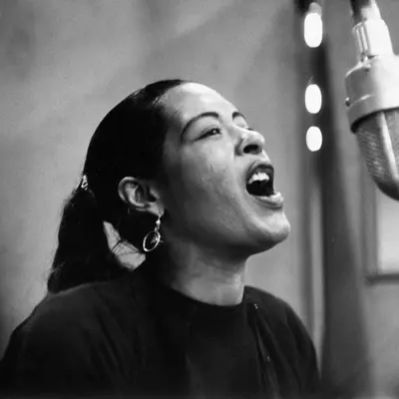What Is Billie Holiday’s Net Worth?
At the time of her death on July 17, 1959, Billie Holiday’s net worth was estimated to be around $750. This meager sum underscores the tragic disparity between her immense talent and the financial hardships she faced during her lifetime. Despite achieving mainstream success as a recording artist in the 1930s and 1940s, Holiday’s earnings were often depleted by unscrupulous romantic partners and her own struggles with substance abuse.
Early Career and Musical Success
Billie Holiday, born Eleanora Fagan on April 7, 1915, in Philadelphia, Pennsylvania, began her singing career in Harlem nightclubs in the early 1930s. Her big break came in 1933 when record producer John Hammond Jr. discovered her at Covan’s club. This led to her recording debut with Benny Goodman and his orchestra on the songs “Your Mother’s Son-in-Law” and “Riffin’ the Scotch.” These early recordings, while significant for launching her career, did not immediately translate into substantial financial gains.
In 1935, Holiday signed with Brunswick Records, where she recorded with pianist Teddy Wilson and his band. Their collaboration produced hit versions of songs such as “What a Little Moonlight Can Do,” “I Cried for You,” and “Easy Living.” Although these recordings were commercially successful, the financial benefits for Holiday were limited due to industry practices of the time, which often favored record labels and bandleaders over individual vocalists.
Holiday’s career continued to ascend in the late 1930s with her joining Count Basie’s band as a big-band vocalist. However, this partnership was short-lived, and she was fired in early 1938. Subsequently, she joined Artie Shaw’s band, becoming one of the first black women to work with a white orchestra. Despite the prestige and exposure, racism at venues hindered her success, and she soon left the band. In 1939, Holiday recorded “Strange Fruit,” a powerful protest song against lynching. While the song became her biggest-selling record, the financial rewards were not commensurate with its impact, as Holiday did not own the rights to the song.
Commercial Zenith in the 1940s
The 1940s marked a period of significant commercial success for Billie Holiday. She co-wrote and recorded “God Bless the Child” with Arthur Herzog Jr., which became one of her greatest hits. She also had a hit with “Trav’lin’ Light,” recorded with Paul Whiteman and his band. In 1944, Holiday signed with Decca Records, and in 1945, her version of “Lover Man (Oh, Where Can You Be?)” became a major hit for the label. The B-side of the song was “That Ole Devil Called Love.”
Despite these commercial successes, Holiday’s financial stability was undermined by her substance abuse problems and legal troubles. In 1947, she was arrested for narcotics possession in her New York apartment. Without legal representation and suffering from dehydration, she pleaded guilty and was sentenced to prison. Although she was released early in March 1948 due to good behavior, the arrest and imprisonment had a detrimental effect on her career and finances. Her comeback concert at Carnegie Hall in March 1948 was a sold-out success, but the earnings were likely used to cover legal fees and personal expenses.
In April 1948, Holiday starred in the sold-out Broadway show “Holiday on Broadway,” further demonstrating her resilience and popularity. However, she was arrested again in early 1949, exacerbating her financial and personal challenges. These recurring legal issues and substance abuse problems significantly impacted her ability to accumulate wealth.
Decline in the 1950s and Final Years
Billie Holiday’s career declined in the 1950s due to economic woes and deteriorating health caused by heavy drug use and abusive relationships. Despite these challenges, she continued to perform and recorded several successful concerts, including two sold-out shows at Carnegie Hall in 1956. That same year, she released her autobiography, “Lady Sings the Blues,” and an album of the same name. Although the autobiography and album were well-received, they did not generate enough income to offset her mounting debts and medical expenses.
In 1958, Holiday released the album “Lady in Satin,” and in 1959, shortly after her death, “Last Recording” was released. These later recordings, while artistically significant, did not provide the financial security Holiday desperately needed. Her personal life was marked by tumultuous relationships. She married trombonist Jimmy Monroe in 1941, but their marriage was marred by infidelity and ended in divorce in 1947. In 1951, she married Joe Guy, her drug dealer, but this marriage also ended in divorce in 1957. Her subsequent marriage to mob enforcer Louis McKay was particularly damaging, as he was abusive and swindled her out of her earnings.
In the late 1950s, Holiday was diagnosed with cirrhosis of the liver. She was hospitalized in the spring of 1959 and treated for liver and heart disease. While in the hospital, police placed her under house arrest for narcotics possession. At the time of her death on July 17, 1959, Billie Holiday had only 70 cents in her bank account and $750 in cash taped to her leg. This stark reality underscores the financial exploitation and personal struggles that plagued her life, leaving her with a minimal net worth despite her monumental contributions to jazz music.
 Net Worth Ranker
Net Worth Ranker




























































